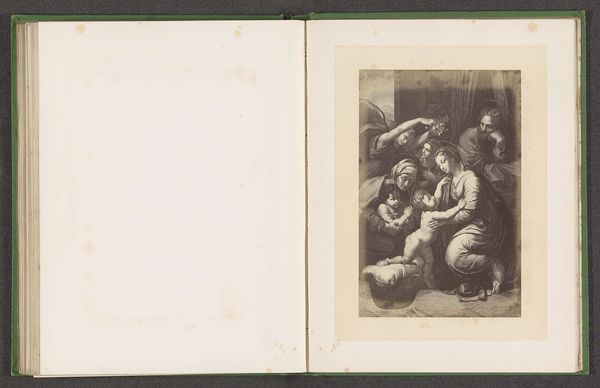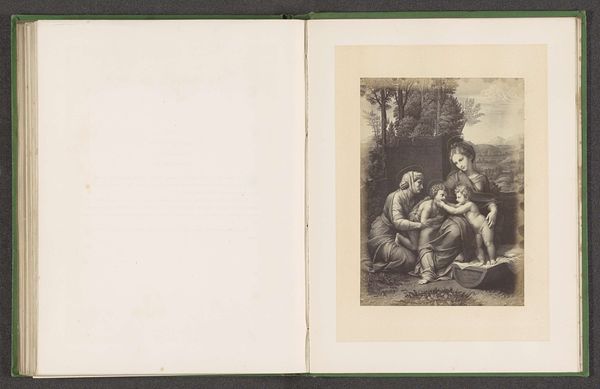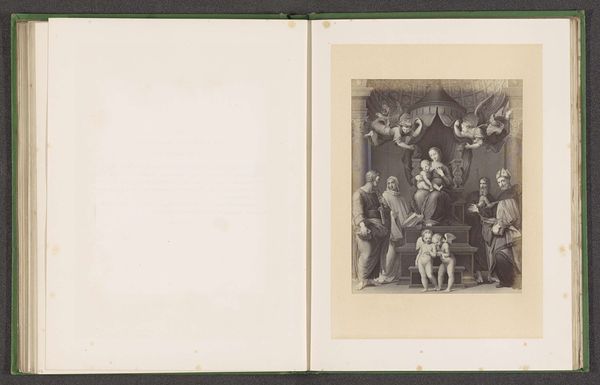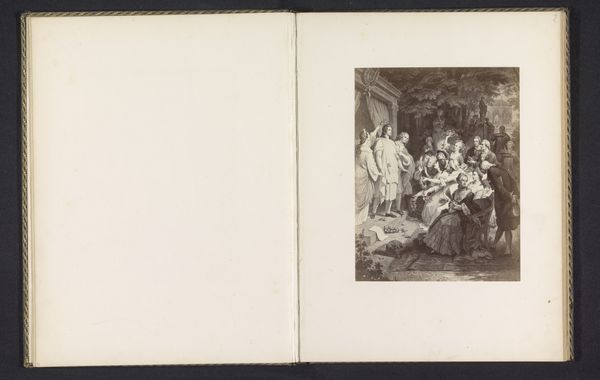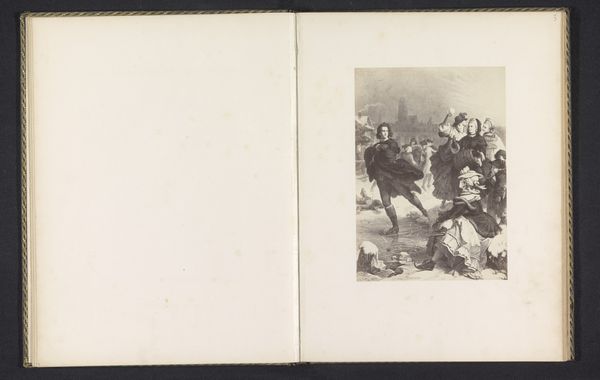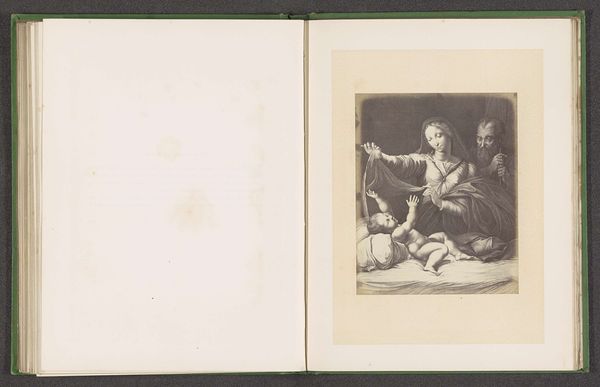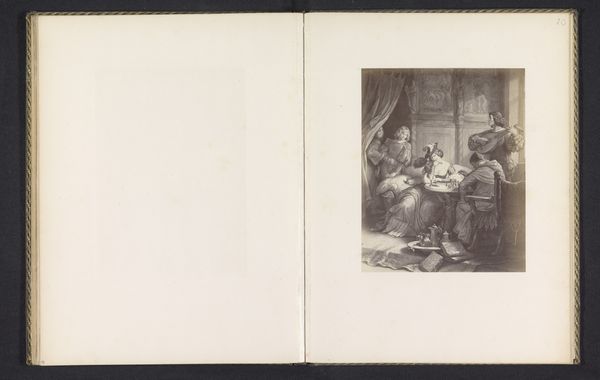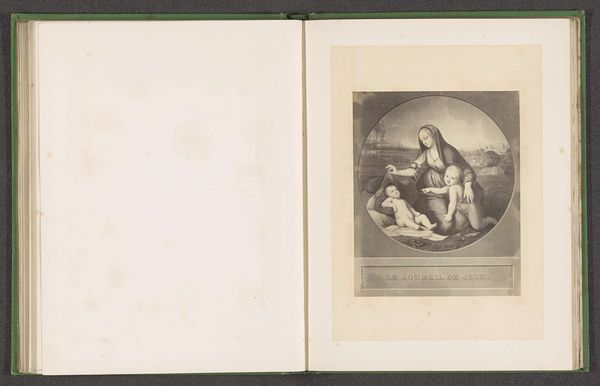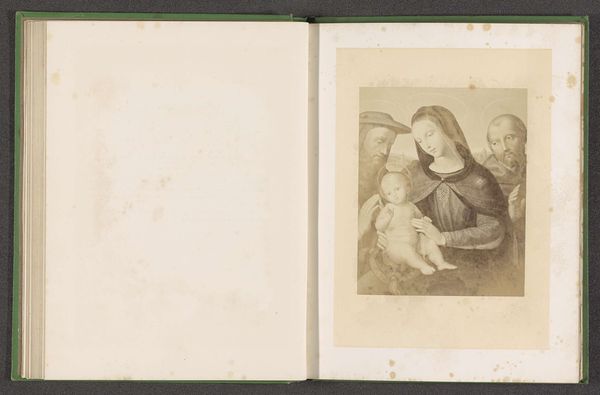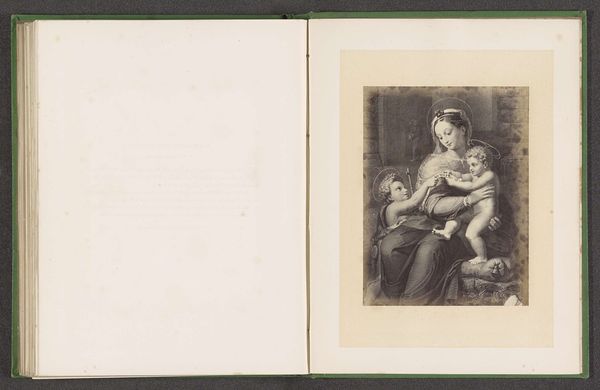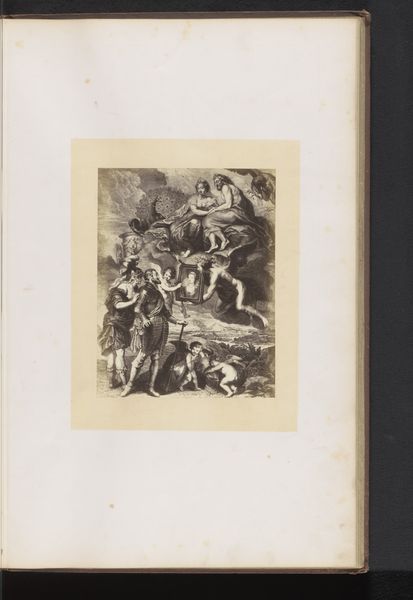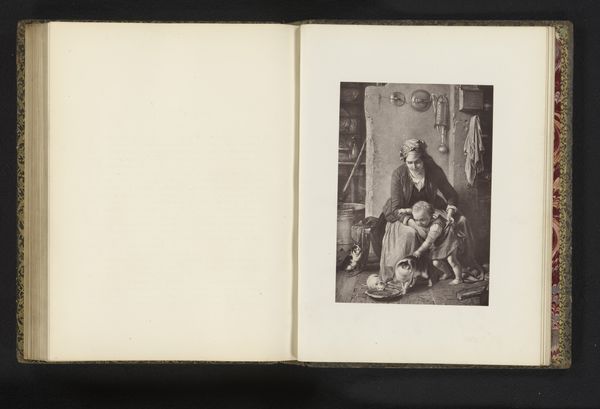
Fotoreproductie van een prent door Constant-Louis-Antoine Lorichon van de Madonna del Divino amore door Rafaël before 1869
0:00
0:00
print, photography
#
portrait
# print
#
photography
#
italian-renaissance
Dimensions: height 166 mm, width 129 mm
Copyright: Rijks Museum: Open Domain
Curator: Here we have a fascinating example of reproductive printmaking, "Fotoreproductie van een prent door Constant-Louis-Antoine Lorichon van de Madonna del Divino amore door Rafaël," dating from before 1869 and attributed to Joseph Cundall. Note the stark tonal range inherent in the photographic printing. Editor: The atmosphere it creates is interesting… almost haunting, isn't it? A sort of nostalgic reverence mixed with the detachment of an artifact long removed from its moment. Curator: Precisely. It's not merely a mimetic exercise; it is a study in translation. Consider how the linear precision of Lorichon’s print renders Raphael’s original brushwork. Now translated via Cundall's lens. We observe a network of visual codings. Editor: It makes me think of the layers of interpretation. Like a whispered story being passed along—each telling shifting slightly in tone and detail. Is the emotional core retained through it all or is something crucial inevitably lost? Look at how tight the framing is—the composition really constricts any feeling of naturalistic depth from the Renaissance era it means to show. Curator: That very tension speaks volumes about our relationship with history, don’t you think? Lorichon aimed to capture Raphael’s idealized grace within the controlled medium of engraving and Cundall then photographs it, adding another layer of objective distancing and yet also a kind of accessibility, a modern lens on antiquity. Editor: It certainly triggers reflections on time and our human need to immortalize beauty… I wonder what Raphael would have made of this ghostly iteration of his Madonna. Perhaps even be fascinated, even tickled? Or totally appalled. I suppose we will never really know. Curator: I would argue that Cundall has provided a unique lens to reflect and to project and not just replicate, challenging us to reconsider the many veils of visual history. Editor: Exactly. Each rendering reveals as much about its own moment, it's maker and how culture reshapes images in a hall of mirrors. What else could art really be expected to do?
Comments
No comments
Be the first to comment and join the conversation on the ultimate creative platform.
